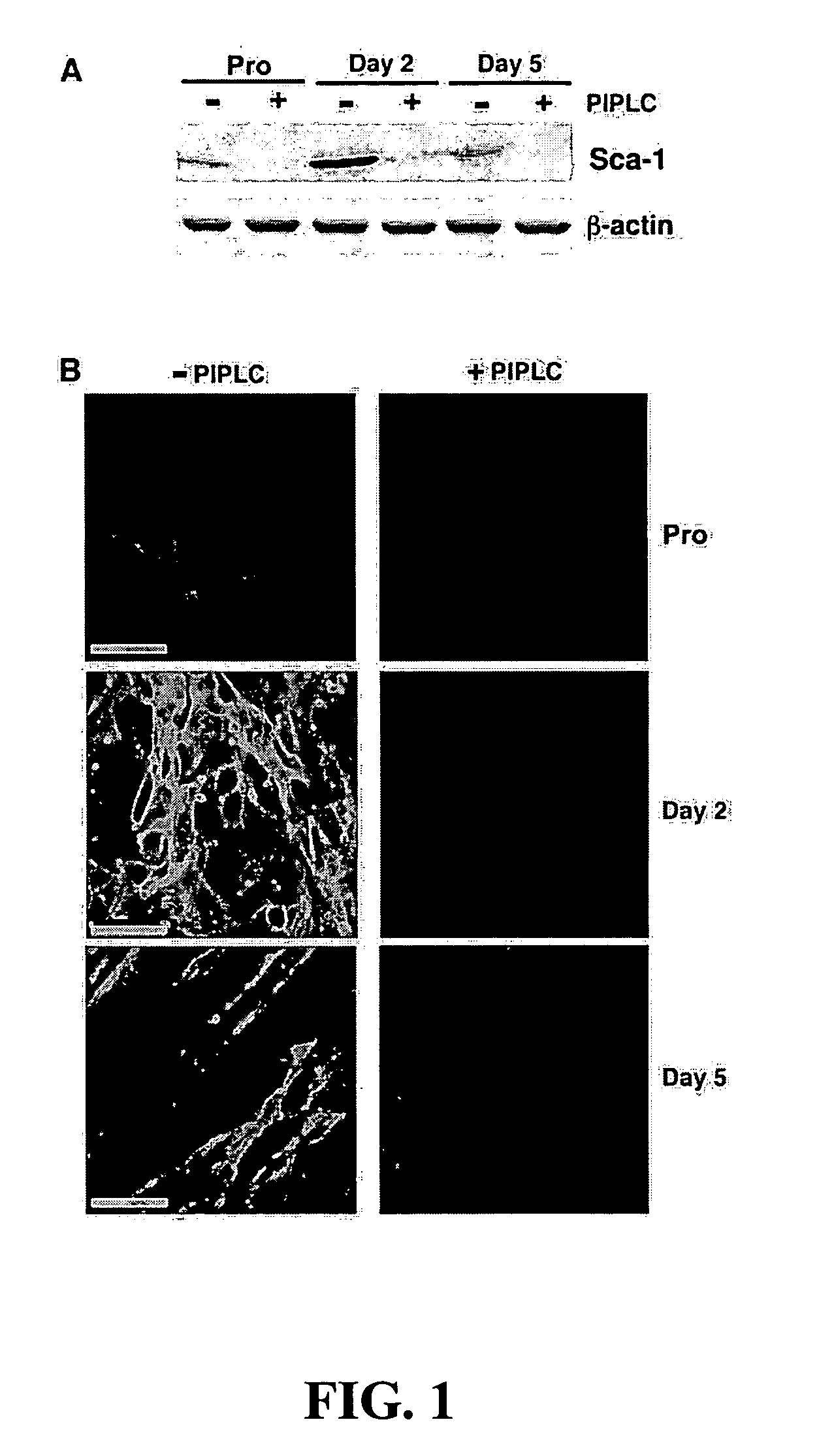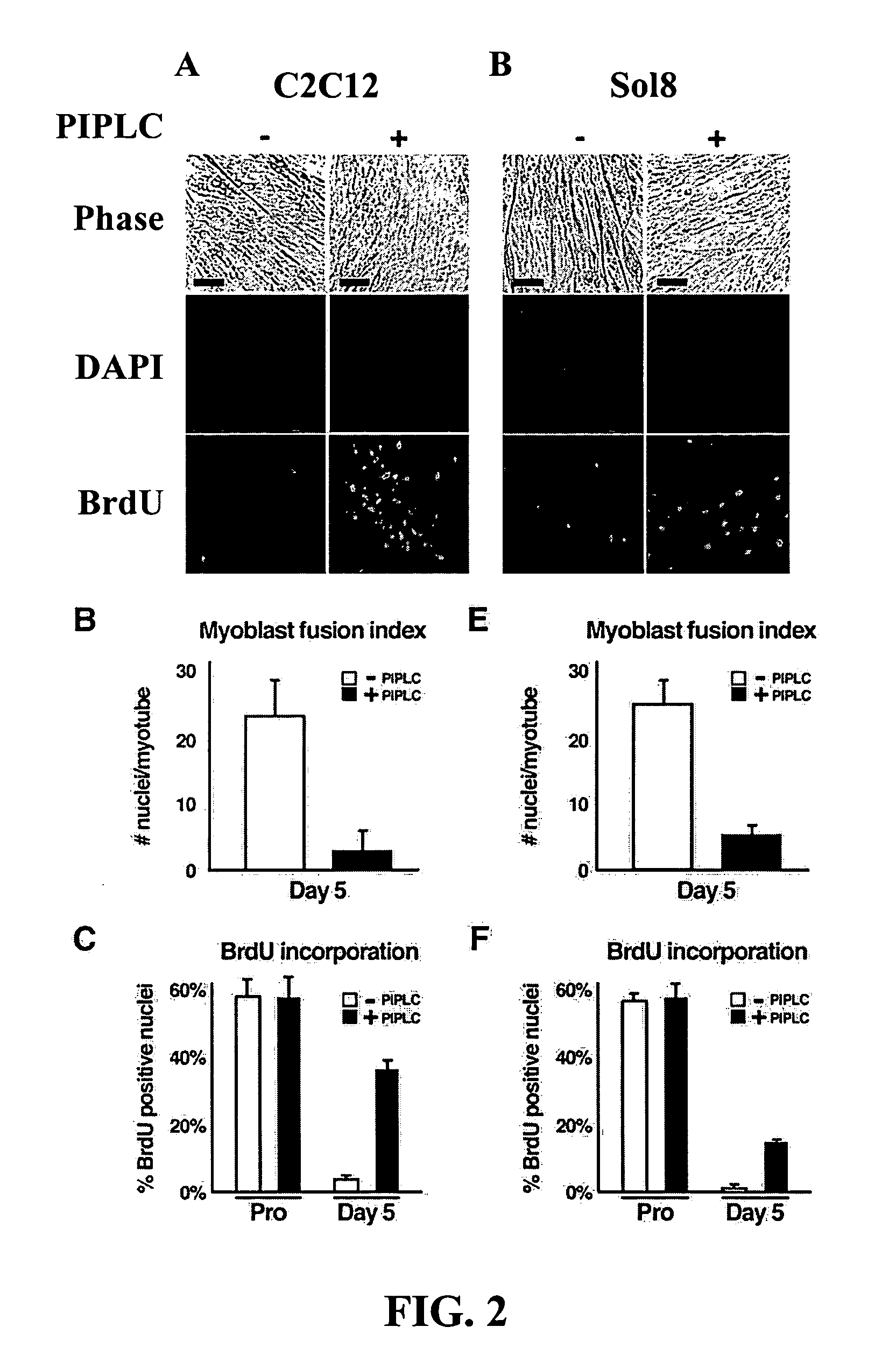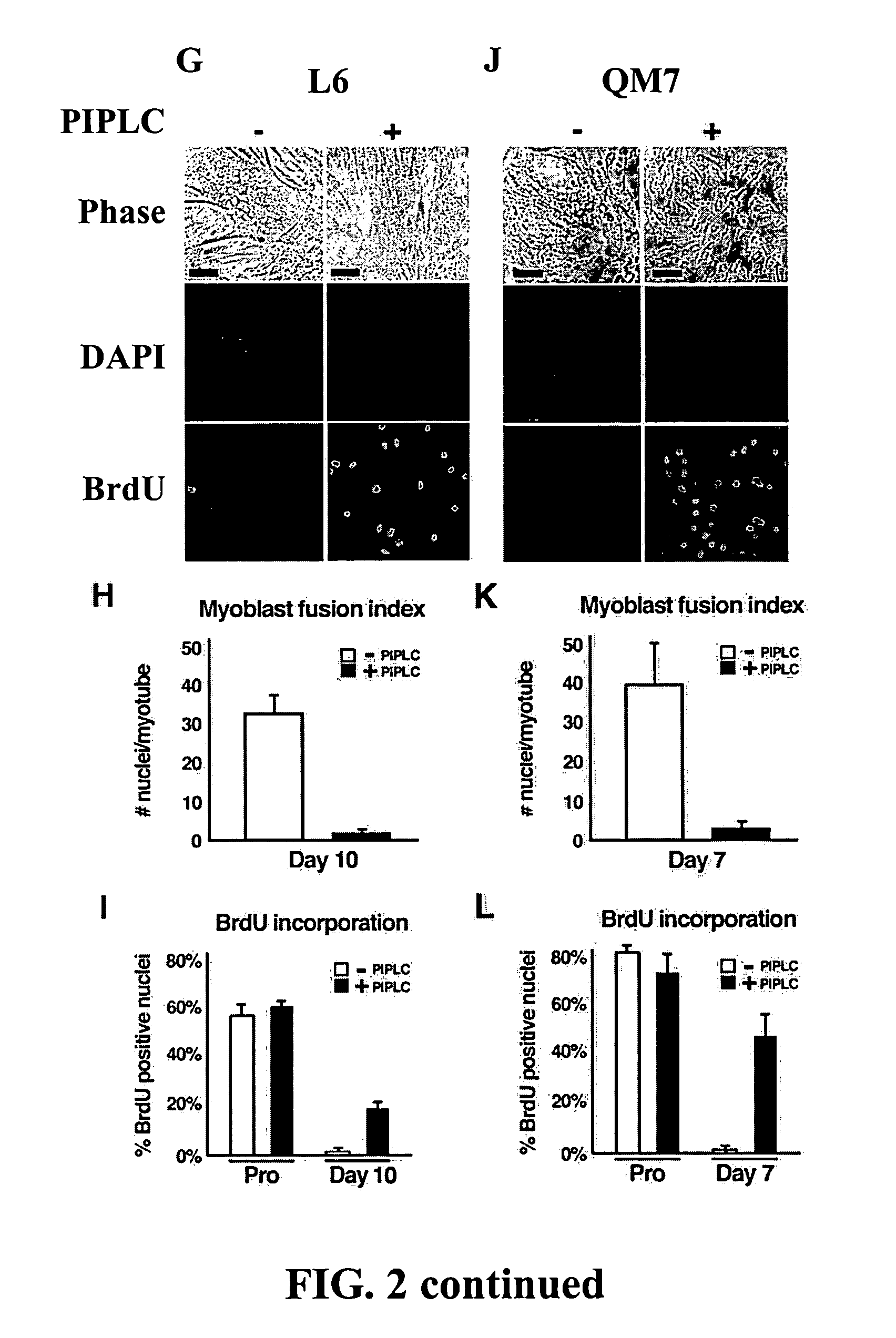Methods for producing proliferating muscle cells
a muscle cell and proliferating technology, applied in the field of cell population expansion, can solve the problems of decreased exercise tolerance, fatigue, reduced exercise tolerance, etc., and achieve the effect of expanding the cell population and expanding the cell population
- Summary
- Abstract
- Description
- Claims
- Application Information
AI Technical Summary
Benefits of technology
Problems solved by technology
Method used
Image
Examples
example 1
Cell Culture and Primary Myoblast Isolation
[0077] Actively growing C2C12, Sol8, and L6 skeletal myoblasts (ATCC) were maintained in DMEM with 10%, 20%, or 10% FBS, respectively. QM7 quail skeletal myoblasts (kindly provided by Charles Ordahl, UCSF) were maintained in M199 medium with 10% tryptose phosphate and 10% FBS. Myoblast differentiation was induced by culture of confluent monolayers in DMEM with 1% FBS for C2C12 and Sol8 cells, 2% horse serum for L6 cells, or M199 medium with 10% tryptase phosphate and 0.5% FBS for QM7 cells. For PIPLC treatment, 5 U / ml of PIPLC (Sigma) was added into the culture medium when cells reached confluence, and with daily media changes. For antibody treatments, 5 μg / ml monoclonal anti-Sca-1 or anti-CD34 were added to medium when cells reached confluence, and with medium changes. Monoclonal anti-Sca-1 antibodies, clones E13-161.7 and D7, were obtained from Pharmingen. Monoclonal anti-CD34 antibody was obtained from Santa Cruz Biotechnology.
[0078] P...
example 2
BrdU Incorporation and Myoblast Fusion Assays
[0079] Cells were plated on cover slips, cultured under conditions described above in Example 1, and labeled with BrdU for 60 min using Labeling and Detection Kit I (Roche) according to the manufacturer's instructions. Cells were stained with a 1:10 dilution monoclonal anti-BrdU (Roche), followed by 4 μg / ml Alexa Fluor 594-conjugated goat anti-mouse IgG in incubation buffer provided with the Labeling and Detection Kit I. Cells were co-stained with antibodies against Myf5, MyoD, or myogenin as described in Example 6. Prior to mounting cover slips on slides, cells were incubated with 1 μg / ml DAPI (Sigma) for 5 min at room temperature. Immunofluorescence signals were acquired with a Nikon Microphot-FX fluorescence microscope and Spot imaging software. Nuclei from low-power (10×) images were analyzed to quantitate BrdU incorporation and myoblast fusion. Each culture stage was analyzed in triplicate, with data representing the mean of 10 high...
example 3
Blocking SCA-1 Function by PIPLC Treatment
[0080] This example describes the use of PIPLC (Griffith and Ryan, Biochim Biophys Acta, 1441:237-254, 1999) to strip GPI-anchored proteins from the surface of C2C12 myoblasts, to investigate the role of GPI-anchored cell surface proteins in myoblast differentiation, as shown in FIG. 1. Treatment with PIPLC had a profound effect on myotube formation (FIG. 2), yielding a population of cells primarily composed of dividing, mononuclear myoblasts even when grown under differentiation conditions. Specifically, as shown in FIG. 2, removal of GPI-anchored proteins from the surface of C2C12 myoblasts resulted in a decrease in myoblast fusion (3±1 versus 23±5 nuclei / myotube) and an increase in BrdU incorporation (37±2% versus 3±1% BrdU positive nuclei), under conditions that normally would produce terminally differentiated myotubes (Shen et al., Dev Dyn, 226, 128-138, 2003).
[0081] Similar experiments were completed using Sol8 murine myoblasts (FIG....
PUM
| Property | Measurement | Unit |
|---|---|---|
| pH | aaaaa | aaaaa |
| pH | aaaaa | aaaaa |
| compositions | aaaaa | aaaaa |
Abstract
Description
Claims
Application Information
 Login to View More
Login to View More - R&D
- Intellectual Property
- Life Sciences
- Materials
- Tech Scout
- Unparalleled Data Quality
- Higher Quality Content
- 60% Fewer Hallucinations
Browse by: Latest US Patents, China's latest patents, Technical Efficacy Thesaurus, Application Domain, Technology Topic, Popular Technical Reports.
© 2025 PatSnap. All rights reserved.Legal|Privacy policy|Modern Slavery Act Transparency Statement|Sitemap|About US| Contact US: help@patsnap.com



